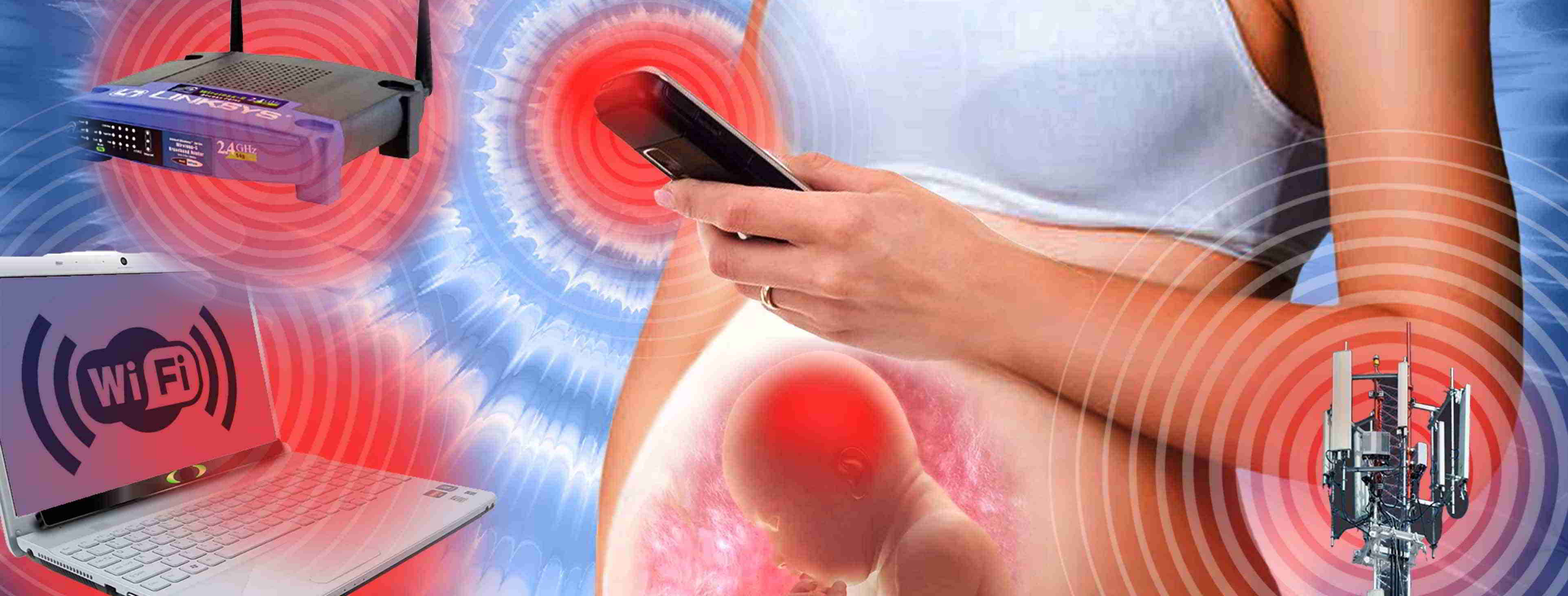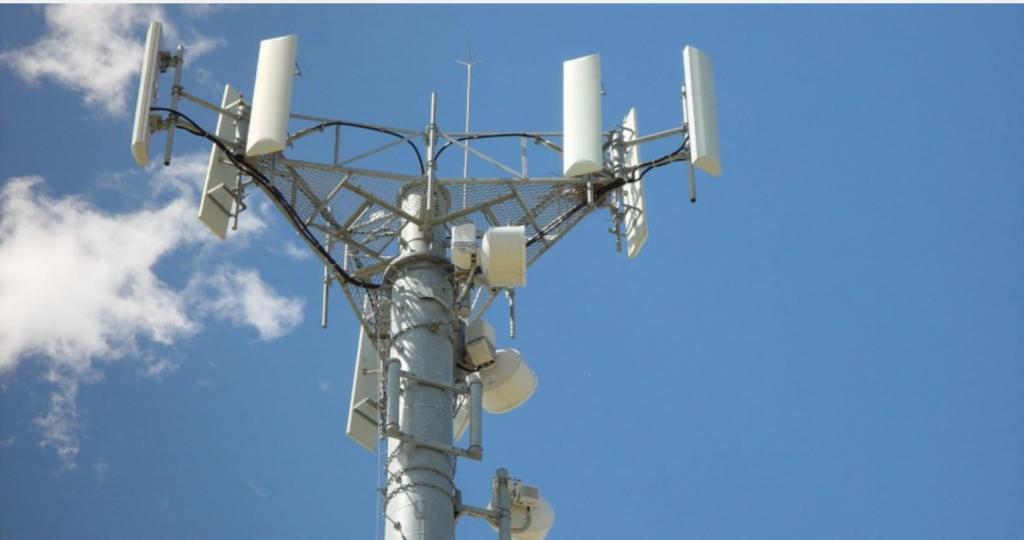Source Article From
Renegade Tribune Here
One strong theme among the citizenry of the world that receives no mainstream media attention is the issue of cell phone towers and the health/environmental threats they pose. There are thousands of peer-reviewed publications in vivo and in vitro that make it quite clear that electromagnetic radiation from our favourite gadgets, wireless devices, as well as the cell phone towers all over the globe are having a biological impact that’s a great cause for concern, or at the very least warrant appropriate safety testing before we continue down this path. This is something that has yet to be done.
This is exactly why a few years ago 200 scientists petitioned the United Nations to look deeper into this issue, to no avail.
Numerous recent scientific publications have shown that EMF affects living organisms at levels well below most international and national guidelines. Effects include increased cancer risk, cellular stress, increase in harmful free radicals, genetic damages, structural and functional changes on the reproductive system, learning and memory deficits, neurological disorders, and negative impacts on general well-being in humans. Damage goes well beyond the human race, as there is growing evidence of harmful effects to both plant and animal life. (source)
Trees
Human health isn’t the only concern. In a study published in Science of the Total Environment, researchers found,
High-level damage in trees within the vicinity of phone masts. We found out that from the damaged side there was always visual contact to one or more phone mast (s). Statistical analyses demonstrated that the electromagnetic radiation from cellphone towers is harmful to trees. Results show that the measurements in the most affected sides of damaged trees (i.e. those that withstand higher radiation levels) are different to all other groups. These results are consistent with the fact that damage inflicted on trees by cellphone towers usually start on one side, extending to the whole tree over time.
This constitutes a danger for trees worldwide. The further deployment of phone masts has to be stopped. Scientific research on trees under the real radio-frequency field conditions must continue.
The study lasted for 9 years and used more than 100 trees.
The field monitoring part of the study was performed in Bamberg and Hallstadt (Germany). Observations and photographic recordings of unusual or unexplainable tree damage were taken along with the measurement of electromagnetic radiation.
In 2015 measurements of RF-EMF (Radiofrequency Electromagnetic Fields) were carried out. A polygon spanning both cities was chosen as the study site, where 144 measurements of the radiofrequency of electromagnetic fields were taken at a height of 1.5 m in streets and parks at different locations. By interpolation of the 144 measurement points, we were able to compile an electromagnetic map of the power flux density in Bamberg and Hallstadt. We selected 60 damaged trees, in addition to 30 randomly selected trees and 30 trees in low radiation areas (n = 120) in this polygon.
The measurements of all trees revealed significant differences between the damaged side facing a phone mast and the opposite side, as well as differences between the exposed side of damaged trees and all other groups of trees in both sides. Thus, we found that side differences in measured values of power flux density corresponded to side differences in damage. The 30 selected trees in low radiation areas (no visual contact to any phone mast and power flux density under 50 μW/m2 ) showed no damage. Statistical analysis demonstrated that electromagnetic radiation from mobile phone masts is harmful for trees. These results are consistent with the fact that damage afflicted on trees by mobile phone towers usually start on one side, extending to the whole tree over time.
What’s also interesting is that the study points out that natural forms of electromagnetic radiation are not the same and do not have the same impact has unnatural sources of radiation do on plant life. Several researchers have pointed out how this topic has received little attention and these physiological effects are being considered negligible.
The study also concludes that most studies that have addressed the effects of microwaves on animals and plants have documented effects and responses at exposures below limits specified in the electromagnetic radiation exposure guidelines and it is therefore necessary to rethink these guidelines.
Since 2005, on the occasion of medical examinations of sick residents living near mobile phone base stations, changes in nearby trees (crown, leaves, trunk, branches, growth…) were observed at the same time as clinical symptoms in humans occurred. Since 2006 tree damages in the radiation field of mobile phone base stations were documented.
Trees that were in the radio shadow of buildings or of other trees remained healthy, because, the researchers hypothesized, they were protected from the radiation.
The research on EMF’s and their environmental impact is quite limited, and studies on humans show that this type of radiation affects biological organisms, especially humans. For example, a paper published in 2018 in Environmental Research titled “Wi-Fi is an important threat to human health” points out that.
“Repeated Wi-Fi studies show that Wi-Fi causes oxidative stress, sperm/testicular damage, neuropsychiatric effects including EEG changes, apoptosis, cellular DNA damage, endocrine changes, and calcium overload.”
What About 5G?
When it comes to 5G, a study published in 2019 in Frontiers in Public Health is one of many that raises concerns about 5G technology. It points out that “novel 5G technology is being rolled out in several densely populated cities, although potential chronic health or environmental impacts have not been evaluated and are not being followed.” It goes on to emphasize that the range and magnitude of potential impacts of 5G technologies are under-researched, although important biological outcomes have been reported with millimeter wavelength exposure. These include oxidative stress and altered gene expression, effects on skin and systemic effects such as on immune function. In vivo studies reporting resonance with human sweat ducts, acceleration of bacterial and viral replication, and other endpoints indicate the potential for novel as well as more commonly recognized biological impacts from this range of frequencies, and highlight the need for research before population-wide continuous exposures.”
Source Study: C. Waldmann-Selsam, et al, Radiofrequency Radiation Injures Trees Around Mobile Phone Base Stations, Sci Total Environ., Dec 1 2016, 572:554-569.
https://pubmed.ncbi.nlm.nih.gov/27552133/
Abstract
In the last two decades, the deployment of phone masts around the world has taken place and, for many years, there has been a discussion in the scientific community about the possible environmental impact from mobile phone base stations. Trees have several advantages over animals as experimental subjects and the aim of this study was to verify whether there is a connection between unusual (generally unilateral) tree damage and radiofrequency exposure. To achieve this, a detailed long-term (2006-2015) field monitoring study was performed in the cities of Bamberg and Hallstadt (Germany). During monitoring, observations and photographic recordings of unusual or unexplainable tree damage were taken, alongside the measurement of electromagnetic radiation. In 2015 measurements of RF-EMF (Radiofrequency Electromagnetic Fields) were carried out. A polygon spanning both cities was chosen as the study site, where 144 measurements of the radiofrequency of electromagnetic fields were taken at a height of 1.5m in streets and parks at different locations. By interpolation of the 144 measurement points, we were able to compile an electromagnetic map of the power flux density in Bamberg and Hallstadt. We selected 60 damaged trees, in addition to 30 randomly selected trees and 30 trees in low radiation areas (n=120) in this polygon. The measurements of all trees revealed significant differences between the damaged side facing a phone mast and the opposite side, as well as differences between the exposed side of damaged trees and all other groups of trees in both sides. Thus, we found that side differences in measured values of power flux density corresponded to side differences in damage. The 30 selected trees in low radiation areas (no visual contact to any phone mast and power flux density under 50μW/m2) showed no damage. Statistical analysis demonstrated that electromagnetic radiation from mobile phone masts is harmful for trees. These results are consistent with the fact that damage afflicted on trees by mobile phone towers usually start on one side, extending to the whole tree over time.


Do you have some photos of trees under radiation attack ?
I don’t recall if I”ve posted any. Check through the links here: http://radiationdangers.com/?s=trees
I can get them. They are all around me and all the trees around the 5g towers are dying or already dead and I know this to be a very recent change so it happens quickly. They should be sued.
They should be tried and executed for 1st degree murder and treason, in my not-so-humble opinion.